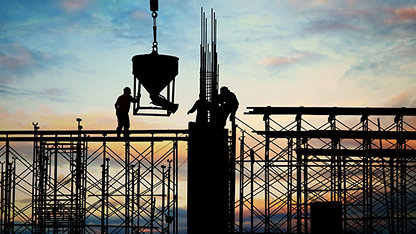The conversation around artificial intelligence (AI), especially generative AI (GenAI), has captured global attention, sparking excitement and a degree of concern. Over the past few years, advancements in AI and data analytics have become ever more accessible, reshaping the possibilities for professionals and organizations in the built environment sector. Against this backdrop, the RICS Digitalisation in construction report 2024 captures the evolving perspectives on digitalisation in construction, highlighting progress and well-documented persistent challenges.
This year's findings reveal a complex picture. While a steady rise in digital tool adoption was expected, the results indicate a mixed trend: a modest increase in usage on some projects, contrasted with a growing share of projects where digital tools remain unused. This duality is evident in areas like whole-life carbon assessments, where respondents anticipate improvements but report low current adoption, indicating the work still ahead for the sector.
Encouragingly, the data show renewed confidence in the benefits of digital tools following a dip in perceived value between the first and second reports. As digitalisation continues to influence project efficiency, safety, and cost management, stakeholders have a clear opportunity to champion this shift and foster collaboration at both the sector and project levels.
Ultimately, the report underlines an industry consensus: advancing digitalisation is essential if the construction sector is to meet pressing social, environmental, and economic goals. Yet, the familiar barriers remain, underscoring the need for an industry-wide effort to overcome cost concerns, develop digital skills, and support collaboration.
RICS members are poised to lead this transformation with an urgent call to accelerate progress and unlock the full potential of digital tools for a resilient future with a buoyant industry, addressing ‘wicked problems’ such as the climate crisis, enhancing social outcomes, and permanently fixing the productivity issue.
Published date: 15 November 2024
Published date: 10 July 2023
Published date: 26 May 2022
“It’s great to see a slight improvement recorded this year, with 18% of UK respondents sharing data and information through digital tools about life cycle emissions, a two percent increase from 2021. But this figure is still low and shows we still have some way to go, if we’re going to make the decarbonisation impact our industry needs. I am confident we’ll continue to see a rise in this figure over the next decade, as we continue to amass relevant and verified data in the Built Environment Carbon Database (BECD) and see wider adoption of the Whole Life Carbon Assessment methodology – via digital tools and integrated data sources, such as BCIS Life Cycle Evaluator that combine the measuring and reporting of cost and carbon. I wholeheartedly agree with Justin Sullivan that we do have the people equipped to support technological advance and the integration of cost and carbon calculation workflows. To borrow Sullivan’s phrase the ‘digitally empowered surveyor’ will increasingly be in demand, as regulatory pressures and political shifts continue to drive the adoption of digital processes. In turn, this will also assist with the sharing and information of data, so integral to improving our knowledge of assets over their life.”
James Fiske
CEO BCIS, Chair BECD
“Digitalisation in the built environment is no longer optional—it is essential for driving efficiency and sustainability for our clients. As surveyors, we have a unique opportunity to lead this transformation by embracing cutting-edge technologies like AI and digital tools. While adoption has plateaued, staying ahead of advancements in technology and managing cybersecurity risks is more critical than ever to ensure we deliver value in a rapidly evolving sector.”
Roger Esson
Head of Sales - UK, Europe & Caspian, Centurion UK Rentals & Services
















